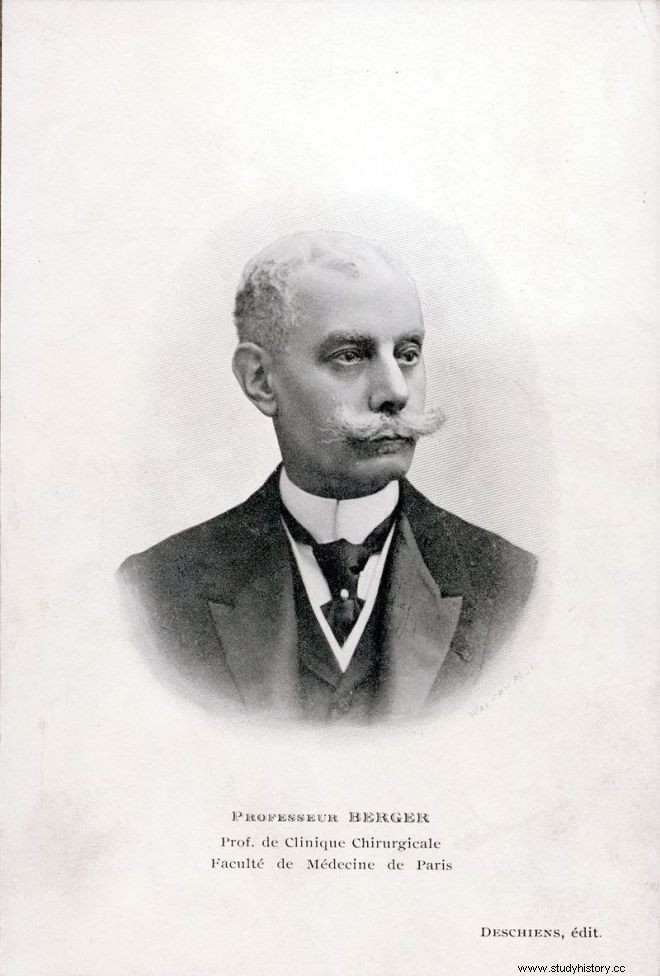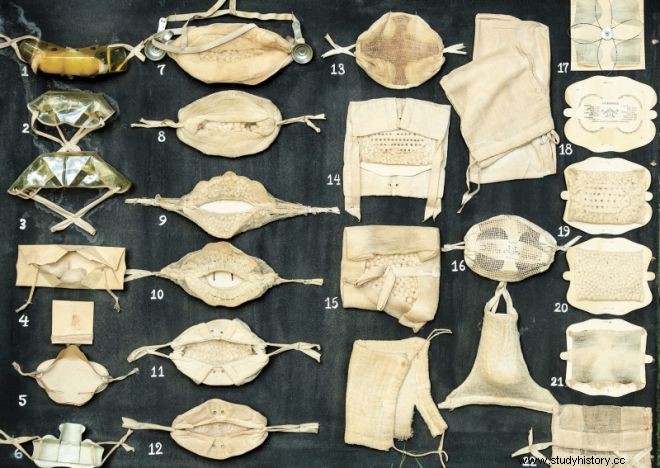The year could not "close" without honoring the man who inspired the product, which the whole planet bought, more than any other, in 2020. Meanwhile, in some countries (like ours) it happened and welcoming a political leader -don't call you a hero-, upon his arrival at the airports. Today is the day we will find out who inspired the mask.
First let me give some numbers. According to Markets and Markets, the face mask market will reach $87.1 billion by 2020.
According to Grand View Research Inc, this reusable mask is expected to reach $7.08 billion by 2027. Obviously, the numbers jumped with Covid-19, but beyond that, the bad effects of air pollution, dust and smoke contribute to the increase. . According to the American Lung Association about 133.9 million people in the US are exposed to unhealthy air conditions each year. A number that in Asia exceeds 2 billion.

In surgical masks (which are sterile and have 3 microfiber sheets that stop... the bad), a 153.1% increase in sales was recorded in 2020, with revenue rising from 2.86 billion in 2019 to 7.24 billion. The country that produced (and still produces) the most is China. In a normal year - a category in which 2020 does not belong - it covers 50% of the planet's needs and exports 70%. In 2020, daily production reached 120 million masks.
According to Med Gadget within the year he is about to leave us (go to the wish of Panagia) the production increased by 153.1%. In the same period meanwhile, 53,000,000,000 units were shipped interplanetary, with most production companies initially 'bowing' in the face of demand. Typically, the largest of its kind in the US, Prestige Ameritech received about 100 phone calls with orders for something that was rarely called. Demands increased 1000 times and the hundred employees declared themselves unable to meet.
The largest producer of N95 masks, the company you know from post-its (3M) had 35 million masks available. Claims reached 3.5 billion.
But let's see, now who was the one who invented what protects us from the coronavirus (among other things) and what did he want to achieve?
Historians have reported that over the centuries there have been many cultures with the habit of covering their faces to protect themselves from contamination. The first record of the use of an object that refers to a mask concerns images from the 6th century BC, which were found at the entrances of Persian tombs. In China there are also images from the Yan dynasty (1279-1368) with handkerchiefs made of silk and gold thread, which covered the faces of the Emperor's servants 'so that their breath would not affect the taste of the food'.
Let's go now, to the 19th century and more specifically to 1827, when the Scottish scientist Robert Brown proved that face coverings protected against dust. In 1848 in America, Lewis Hassley had made and donated to the miners (he also got the patent), with Louis Pasteur giving an extra meaning in 1861, when he proved the existence of microbes in the air.

The first surgeon to cover his face during surgery was Paul Berger, a French professor of clinical surgery and pathology at the Faculté de Médecine de Paris. He did it when the planet was alive in October 1897. Until then surgeons did not cover the face and nose while working with coughing, sneezing and droplets from talking becoming a problem for patients. He noted that it was not long before Louis Pasteur was informed about germs or Ignaz Philipp Semmelweis about the importance of antiseptics as a means of cleaning surgeons' hands.
On 2/22/1899 he made a publication on the subject. It began with the observation that 'for many years I have been concerned as to the destination of liquid droplets from the mouth of the surgeon or his assistants and their relation to the production of infection, a phenomenon which is observed from time to time under conditions of surgical asepsis. '. Among the things that had already happened and had raised his suspicions was the pyorrhea (pus discharge, if you will) that he had, in an operation he performed while he had odontogenic paresthesia (inflammation in the jaw, after an incision). Afterwards, he noticed that even in the shortest conversations with his colleagues in the operating room - those of one syllable - droplets of saliva fell from their mouths.
Here we will need to put a colon.
Carl Flügge, a bacteriologist and specialist in oral hygiene, had already reported on the existence of pathogenic microbes in saliva as early as 1897. The respiratory droplets named after him paved the way for the concept of droplet transmission as a way spread of respiratory infectious diseases.
Berger was aware of Flügge's finding and thought of trying to protect surgical incisions from this particular cause of infection. How; By covering his mouth during surgeries. He started with a simple handkerchief, which he replaced with a patent involving an octagonal cloth with six layers of gauze. Cover the nose, mouth and beard. He had sewn the lowest part to the highest of his sterile linen apron. At the side ends he had sewn two pieces of rope, which he tied behind his neck.
What Berger did not know was that British surgeon Joseph Lister had claimed as early as 1867 that 'wound disease' was caused by 'the germs of microscopic living organisms' that Pasteur had described when he proposed asepsis as a way extermination of microbes in open wounds - instead of using chemicals.
Back at Berger, fifteen months after he first covered his face during surgery—as did his colleagues—the incidence of infections had decreased. In the conclusion of his paper, he wrote that his creation did not in any way hinder his work, while he protected the patients. "I am not blind to the fact that this is a great shock to tradition and therefore cannot receive the positive recognition that was given to the German surgeons, as was the case with Professor Mikulicz".
Let's make another stop:Jan Mikulicz-Radecki was a Polish surgeon, inventor of new techniques and tools and one of the first to recognize the importance of antiseptics. He was also one of the pioneers of aseptic techniques and was the first to believe Flügge and wear a mask in the operating room.
Why did the others whistle indifferently? Because at that time scientists were not convinced (yet) that the mouth is a huge source of infections. Much later the information would emerge that it is the 'home' of at least 1,200 species of bacteria.

At least 1,000 photographs of surgeons at work, in the US and Europe with their noses and mouths covered, from 1863 to 1969 have been included in the research. With the outbreak of the Manchurian plague (1910-11, it had started in China and the root was the marmot hunted for its fur) and the influenza pandemic (1918-19), the mask became a way for those who worked in or were treated in hospitals to protect themselves from infectious diseases that existed outside operating rooms.
As you can read in the Lancet, during the flu pandemic the use of masks was also mandatory for police forces, as well as for residents of certain US states. The reduction in deaths in San Francisco was attributed to the use of a mask and it was then found that it protected the wearer from contamination. Their evolution has continued, with healthcare workers agreeing to wear them everywhere and always when they work. In the first decades of the 20th century, different types began to circulate - as well as many options in designs. Most of them were washable, the added metal elements were sterilized and the use became simpler.
The smell of cigarettes saved (millions of) lives
Until then, no one had claimed the patent for the 'sanitary mask'. It was done by Canadian inventor Joseph Edouard LeDuc, on 3/2/1920. He was the one who started sewing cellulose masks, which he 'stuffed' with cotton and fastened behind the ears with strings. He had barbers in mind as a source of inspiration. As the Bobr Times writes, he had gone to his barber and next to him another customer was smoking 'an awful cigarette'. The smell bothered him. The 21-year-old LeDuc started thinking about small masks, like those worn by soldiers in World War I that fit in a trouser pocket—as a way to combat similar phenomena with suffocating smells. He had a monopoly on the 'ancestor' of the N95 mask until 10/5 1938.

In the meantime, he also got the patent for the 'folding health mask' (18/1/1924), the one for the paper mask ('ancestor' of the disposable mask) and in general he got more than 20 patents - with different sizes, shapes and materials. He sold several of them to Germany and France - which had to fight a pandemic. While he had gotten all buff, he seemed more interested in the next undiscovered mask. Additionally, his priority was to have the resources to help his daughter, Estelle, fight polio. LeDuc died at 70, of a heart attack.
